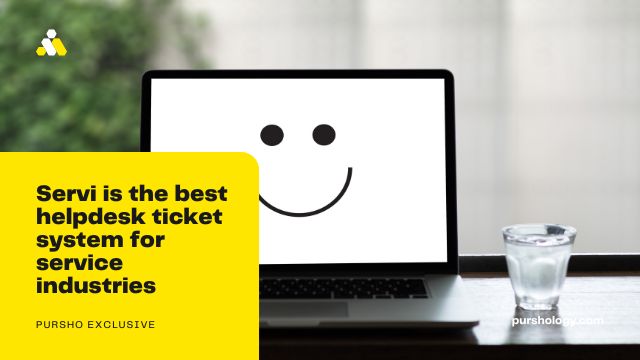On the whole, the number of complaints that companies receive on a yearly basis is staggering. It’s a common occurrence to hear customers complaining about issues such as timely delivery, incompetent customer service representatives and responses, lack of information, and lack of knowledge about the products or services in question.
Service industries are renowned for their inability to handle complaints with any degree of efficiency. It is not uncommon to find companies who are unable to even figure out how to process complaints and resolve them effectively.
It is important that you do your due diligence before hiring a third-party helpdesk ticketing software provider because it is better to have it all in one place rather than having it spread across several different platforms (i.e., web site, mobile phone application, app).
The best way to get started with any type of helpdesk ticketing software provider is by doing some research on the company you are considering using. It can be tricky at times because there are so many options when it comes to third-party ticketing systems for helpdesk support but choosing the right one will depend on what type of helpdesk ticketing software you need from your company.
Here are ways that you can be effective at customer service:
1. You need a system that supports multiple platforms (website, mobile application, etc.). You should consider whether your business has an app or website because although they look similar they may not perform quite as well in terms of functionality. This could be changing if your business starts expanding into other areas such as marketing and branding or expanding internationally; this means more options for people who wish to use their website much more than others might want an app for their mobile phone device.
2. Most people prefer online solutions over offline ones because online solutions allow them to respond very quickly and efficiently which makes them more convenient for business owners who may have employees work from home or offices where employees don’t have access to computers/mobile devices/cell phones at home yet still need email replies from their employers which will require them to use their computer when working from home/office which would otherwise take longer than if an employee was working from home/office since they do not have access to computers/mobile devices/cell phones at home yet still need email replies from their employers which will require them to use their computer when working from home/office which would otherwise take longer than if an employee was working from home/office since they do not have access
3. What is a help-desk ticket system?
When you’re in the service industry, you’re dealing with a lot of people. It might seem like an obvious thing, but it’s easy to forget that when you have a bunch of different people working on a single issue. The problem here is that they all have their own ideas and feel different about what they need to do.
This is why it can be so helpful to have help desk software that will allow your team to be able to work together in harmony and help each other out.
The best way to do this is by using ticketing software, which will allow your entire team to use the same platform so that they can take care of all their customer issues.
With this software, the time spent on customer support calls from your customers will be reduced significantly because of the fact that you can now organize your client statements into categories, such as “general support questions” or “technical support questions” and make them easier for your customers to understand.
How can customer service software help service industries?
Customer service software is a computer program that provides manual and automated help on technical problems. The software allows users to interact with customers through the use of a graphical interface.
The purpose of customer service software is to assist your customers in resolving their problems, so they may continue to work with you. Generally, the software can be categorized into three types:
a) Helpline for complaints:
b) Help desk for technical support:
c) Technical support for support services:
The first two types are usually provided by telephone, while the third type is usually provided through email. The main difference between each type of customer service software is how it handles complaints and technical support requests, which is explained below. For example, if you use an email system to send out an email response to a customer’s complaint, your system will be classified as a helpline. However, if you use an i-chat system to send out a response via an online chat server, your system would be classified as a help desk because it provides technical support services. Typically the helpline system works closely with your staff and employees in order to get rid of troubleshooters or call center employees who are not affected by the problem at hand and thus cannot report the issue directly to your staff members.
Meanwhile, if the problem lies at the endpoint such as the end-user or end host computer or server where you have high availability (high uptime), then you can use the helpline system rather than the help desk because it can handle high ticket numbers instead of the only low ticket numbers. There are also some instances where a human staff member (chat operator) has better knowledge in handling certain technical issues than automation systems (email). If automated systems have too many errors in their records then you need human staff members for resolving those errors rather than hardware-controlled systems (e-mail). The solution might be different depending on your needs like providing one class of help desk solutions or several classes depending on your business needs like providing one class for phone calls and another class for emails. Myself, I also rely on automated systems when I’m working full time and I don’t have time for human staff members who take too much time from me when I’m busy in other stuffs like writing articles/books/videos etc..
You may also want to know about my favorite self-help books that I recommend if you want more information about this topic:
“How To Create A Positive & Positively Influential
The benefits of using customer service software.
Customer service software can be a great solution for all businesses. The simplest, most affordable solution for improving your customer service and customer satisfaction is to use one of many customer service software solutions.
But not all solutions are created equal, so knowing which features to prioritize, what features are free with the purchase and which features are best paid for can be difficult. To help you make better decisions, we’ve compiled 17 reasons why you should use customer service software to run your business.
How to get started with customer service software.
Customer service software is the most comprehensive and affordable tool that businesses can use to solve all types of customer problems. We all have different ways of dealing with our customers and it’s important for businesses to be able to differentiate themselves from their competition in order to stay ahead of their competitors.
Helpdesk software solutions like Servi are used by companies across the globe as a marketing tool. The best helpdesk software solutions are very cost-effective when compared with other similar tools in the market today. The program is also easy to install and configure, which means that businesses can be up and running within minutes.
The best thing about this system is the completeness it offers in terms of features and solutions, allowing businesses to focus on what they do best, which is customer service.
Conclusion: Customer service software can help service industries in many ways.
The Wikipedia article “Customer service software” is a good place to start: “Customer service software provides a way for business, government and non-governmental organizations to improve their customer service. Customer service software is used in both large and small organizations.
Software for customer care, for example, may include forms, telephones, customer support agents; reporting tools, such as training and performance metrics; scheduling tools; and other programs to enable customers fully participate in the typical activities of customer care.
The term ‘customer service (also called ‘customer orientated’ or ‘customer friendly’) is used differently depending on the context. It may refer to either the provision by an organization of services or goods to customers or it may refer specifically to the provision of services by a single organization to its own customers.




